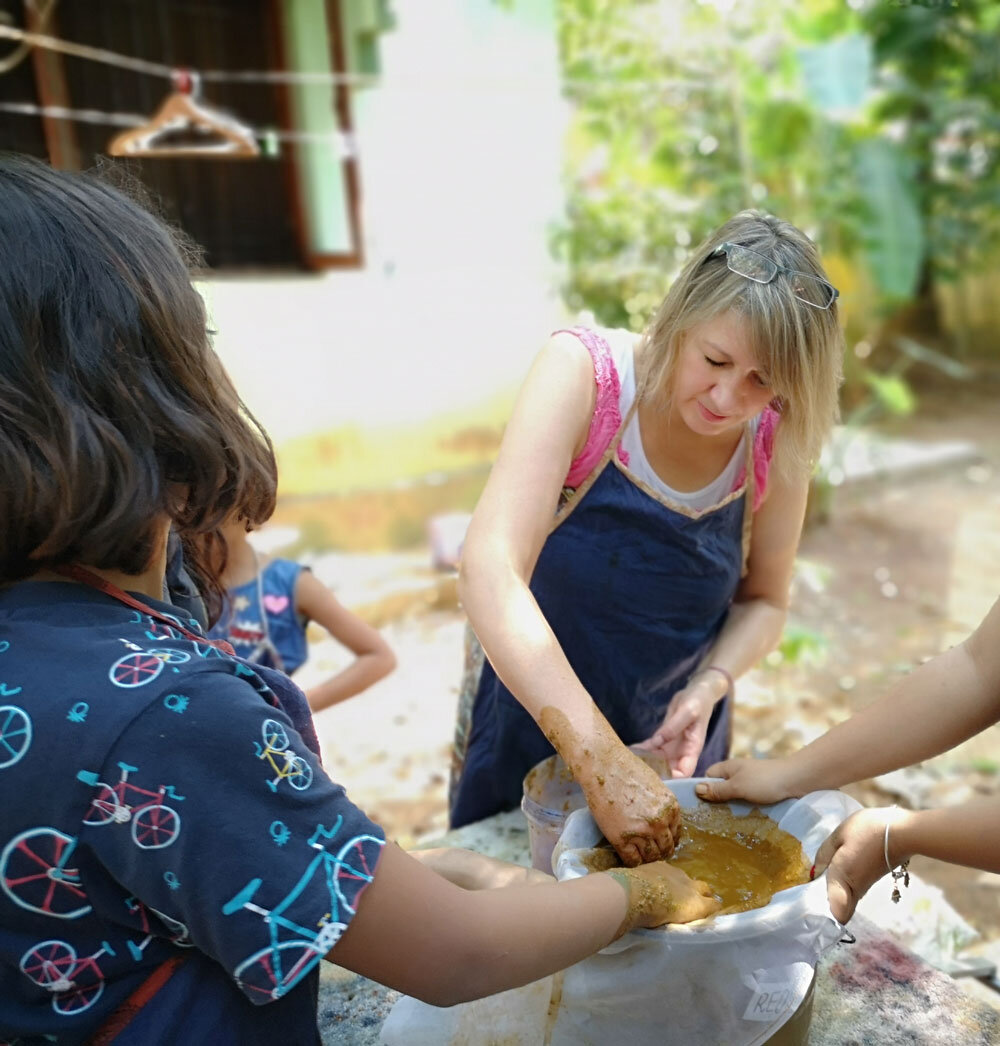Dyeing with Plant Colours
For thousands of years, natural dyes were used all over the world. This knowledge about the complex manufacturing processes is almost forgotten nowadays.
I was all the more fascinated by this gentle way of dyeing during a visit to India. I met wonderful Indian people who are very concerned about environmental pollution and put all their energy into reviving this old knowledge of “natural dyeing”. The experience of dyeing myself was very important to me. I wanted to feel these natural colours myself and absorb the dyeing process with all my senses. In order for a plant colour to develop, all four elements are needed: Earth, water, fire and air. In the end, the power of these elements is expressed in the dyed fabric and vibrates with it. What power!

It is a very sustainable way to protect the environment, because plant dyeing can be used without chemicals. It is very important to us that we only use vegetable dyes, where no toxic mordant is used in the preparation of the fabric, and no dyes made from animals. For our plant dyed t-shirts & jogging suits we only use madder, sea salt and burnt ash. Natural dyed textiles are wonderful but require people to rethink. Eternally durable and biodegradable contradict each other. Either it is a chemical dyeing that pollutes the environment for a long time or it is a natural dyeing that naturally changes somewhat over time and at some point returns to the natural cycle. Therefore, plant-dyed textiles should never be washed with conventional detergents, because these contain optical brighteners and other harmful substances for the plant colour. Ecological detergents or gentle wool detergents are the better choice for plant dyes. SPARKLES OF LIGHT is starting a research project on the topic of “plant dyeing on cotton” and is looking for people who already have experience in this field and would like to support us.

